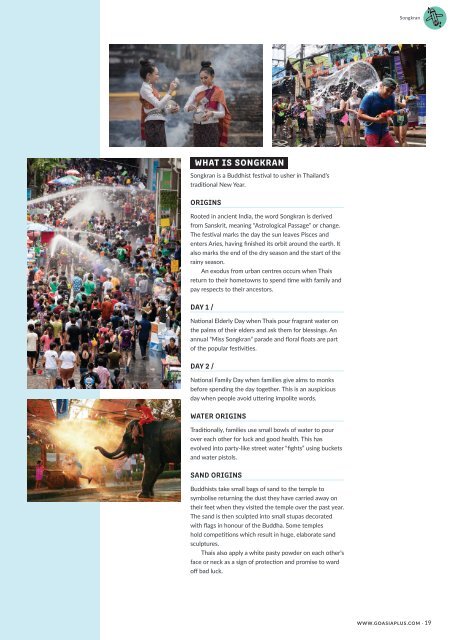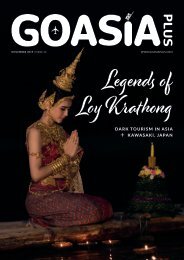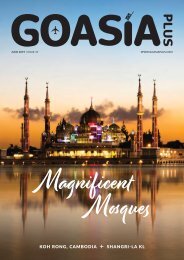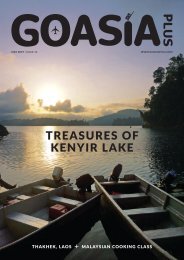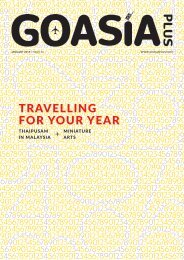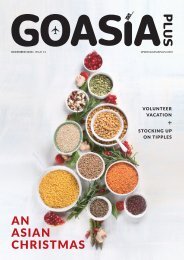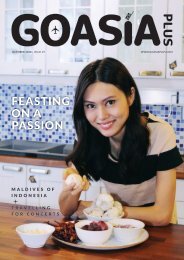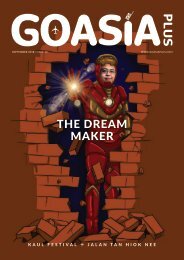GOASIAPLUS March 2018
Read stories on the origins of Thailand's most sacred festival, Songkran, destinations for book lovers in Asia as well as a peek into Vietnam's hidden island of Phu Quoc
Read stories on the origins of Thailand's most sacred festival, Songkran, destinations for book lovers in Asia as well as a peek into Vietnam's hidden island of Phu Quoc
Create successful ePaper yourself
Turn your PDF publications into a flip-book with our unique Google optimized e-Paper software.
Songkran<br />
WHAT IS SONGKRAN<br />
Songkran is a Buddhist festival to usher in Thailand’s<br />
traditional New Year.<br />
ORIGINS<br />
Rooted in ancient India, the word Songkran is derived<br />
from Sanskrit, meaning “Astrological Passage” or change.<br />
The festival marks the day the sun leaves Pisces and<br />
enters Aries, having finished its orbit around the earth. It<br />
also marks the end of the dry season and the start of the<br />
rainy season.<br />
An exodus from urban centres occurs when Thais<br />
return to their hometowns to spend time with family and<br />
pay respects to their ancestors.<br />
DAY 1 /<br />
National Elderly Day when Thais pour fragrant water on<br />
the palms of their elders and ask them for blessings. An<br />
annual “Miss Songkran” parade and floral floats are part<br />
of the popular festivities.<br />
DAY 2 /<br />
National Family Day when families give alms to monks<br />
before spending the day together. This is an auspicious<br />
day when people avoid uttering impolite words.<br />
WATER ORIGINS<br />
Traditionally, families use small bowls of water to pour<br />
over each other for luck and good health. This has<br />
evolved into party-like street water “fights” using buckets<br />
and water pistols.<br />
SAND ORIGINS<br />
Buddhists take small bags of sand to the temple to<br />
symbolise returning the dust they have carried away on<br />
their feet when they visited the temple over the past year.<br />
The sand is then sculpted into small stupas decorated<br />
with flags in honour of the Buddha. Some temples<br />
hold competitions which result in huge, elaborate sand<br />
sculptures.<br />
Thais also apply a white pasty powder on each other’s<br />
face or neck as a sign of protection and promise to ward<br />
off bad luck.<br />
WWW.<strong>GOASIAPLUS</strong>.COM · 19


